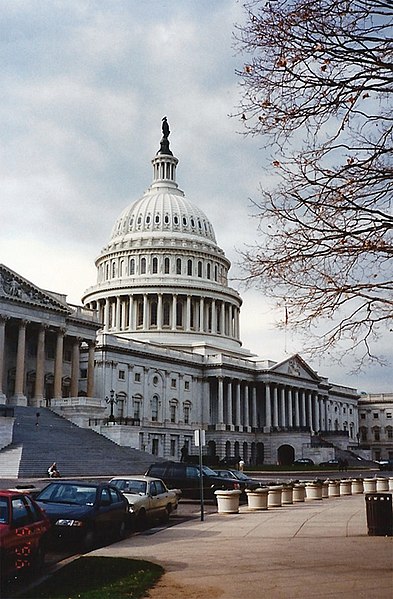104th United States Congress
The 104th United States Congress was a meeting of the legislative branch of the United States federal government, composed of the United States Senate and the United States House of Representatives. It met in Washington, D.C. from January 3, 1995, to January 3, 1997, during the third and fourth years of Bill Clinton's presidency. Apportionment of seats in the House of Representatives was based on the 1990 United States census.
United States Capitol (1996)
President Bill Clinton signing welfare reform legislation
Al Gore (D)
Strom Thurmond (R)
United States House of Representatives
The United States House of Representatives is the lower chamber of the United States Congress, with the Senate being the upper chamber. Together, they comprise the national bicameral legislature of the United States. The House is charged with the passage of federal legislation, known as bills; those that are also passed by the Senate are sent to the president for signature or veto. The House's exclusive powers include initiating all revenue bills, impeaching federal officers, and electing the president if no candidate receives a majority of votes in the Electoral College.
United States House of Representatives
Republican speaker of the House Thomas Brackett Reed (1895–1899)
U.S. congressional districts for the 115th Congress







